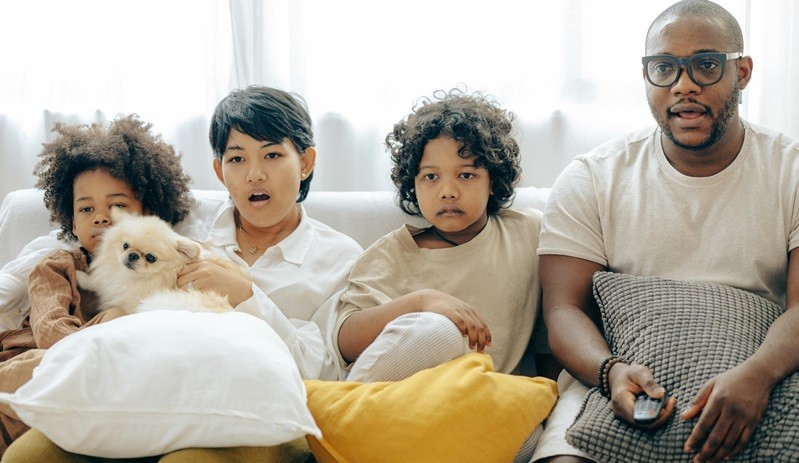Trigger warning: death, cruelty, and controversy
Ralph Fiennes, best known to some as the sadistic Nazi commandant Aemon Goeth in Schindler’s List, and to most as the noseless sadistic dark wizard Voldemort in the Harry Potter franchise, recently spoke out against the trigger warnings which appear before every film, tv show or theatre performance we see, saying;
“… I think the impact of theatre should be that you’re shocked and you should be disturbed. I don’t think you should be prepared for these things and when I was young, [we] never had trigger warnings for shows.”
I have to say that as a child who grew up in the 80s, an actor, and a children’s drama teacher, I wholeheartedly agree.
When I was five, I was plonked in front of the television to watch Watership Down, which was rated U at the time, and which my parents believed was about fluffy bunnies on an adventure. What I actually watched was a 70s animation about rabbits tearing each other’s throats out, being eaten by dogs, and getting caught in snares, to name just a few memorable scenes. I would say that I was fairly traumatised, along with many others of my generation – just 40 years later, in 2023, the movie was re-classified as a PG.
After that, I wouldn’t sleep with the light off, refused to go outside alone after dark to feed my own pet rabbit (he was a vicious bugger to be fair), and had a genuinely irrational fear of wild rabbits, coupled with an odd fascination with all things related to the movie and book, which I read years later.
Would my parents have sat me down alone had there been trigger warnings? Possibly not. But what I did gain at a young age was an insight into our landscape, the effect we as humans have on our environment and our countryside, and that nature is cruel.
With that in mind I move on to something that I have encountered a few times since starting Noodle: parents asking us not to allude to death as their child has developed a fear of it. Usually children start experiencing these feelings around the age of four or five, when they seem to get a feeling for their own mortality. But should we really steer clear of the issue when it’s the only certainty in life, other than taxes – especially since we never have a problem telling kids how expensive life is.
This is where Disney is a real force. They are masters at dealing with the subject of death. I’d say that most people’s first experience of this kind of grief would have come from a Disney movie. Bambi’s mother, Mufasa in the Lion King; blimey, I used to cry my eyes out over the scene in Dumbo where he visits his mother in elephant prison and she wasn’t even dead!
These movies serve a real purpose, to allow children to experience the emotions they will have to deal with in later life, and offer a fantastic platform for parents to talk to them about how they are feeling and why. The characters affected by the loss of a friend or family in these movies usually grow themselves from the experience, showing that life must go on and we get stronger as we face its challenges – not that I expect many children to have to navigate herds of wildebeest rampaging through South Cheshire. Shying away from the subject and wrapping them in cotton wool leaves them ill-equipped to deal with those feelings.

Fiennes point that theatre and film are designed to shock is entirely valid. Performance has always been a vehicle for driving a point home, whether historical, political or social. You may have heard of Bertold Brecht, a German playwright who fled to the USA at the outbreak of WW2. He is credited with developing theatre as a political tool, to educate and motivate the audience to react. At drama school we performed one of his plays ‘Fear & Misery In the Third Reich’ (clearly not a comedy). It’s a selection of scenes depicting life in Germany in the late 1930s, everything from the Jewish wife packing to go away for a ‘few weeks’ at her German husband’s request, to the young lad mentioning over dinner that he told his Hitler Youth leaders his dad didn’t agree with all the Fuhrer’s policies. Cue the knock at the door and suddenly, dad’s gone.
We researched the era at a Holocaust museum and library in Golders Green and they invited us to perform for an anniversary during which a number of Holocaust survivors were in the audience. The play was ‘in the round’, meaning the audience are seated in a circle, looking in on the action. I caught the eye of a lady struggling to hold back a cough, as the minute she lost the battle the two SS guards patrolling the auditorium descended on her row and remained there watching her intently for a good few scenes. At the end we did a Q&A with the audience and were told the atmosphere created was chillingly similar to that which people living through it had felt at the time.
Triggering? No doubt. But if someone can survive the horrors of Auschwitz – something none of us have or hopefully ever will endure – and can sit through that, then maybe we should credit ourselves and our children with a little more robustness and give the trigger warnings a miss. After all, life doesn’t have them.







